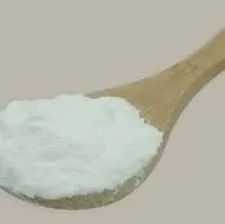Optical Brighteners for Plastics Enhancing Aesthetics and Functionality
In the world of plastics, aesthetics and functionality go hand-in-hand in determining the final product's appeal and performance. One of the most important additives used in the plastics industry to enhance the visual properties of materials is optical brighteners. These compounds, also known as fluorescent whitening agents (FWAs), have gained significant attention for their ability to improve the brightness and whiteness of plastic products, making them more attractive to consumers and more competitive in the marketplace.
What are Optical Brighteners?
Optical brighteners are organic compounds that absorb ultraviolet (UV) light and re-emit it as visible blue light, effectively increasing the brightness of materials. This phenomenon is particularly beneficial in various plastics used in consumer goods, packaging, and industrial applications. Optical brighteners can create a brighter and more appealing appearance, countering the natural yellowness that can occur in many plastic formulations due to aging, heat exposure, or other environmental factors.
How Optical Brighteners Work
The mechanism by which optical brighteners enhance the brightness of plastics is rooted in their ability to alter the way light interacts with the material. Typically, these brighteners are added to the polymer matrix during processing. When exposed to UV light – which is abundant in sunlight – the brighteners absorb the invisible UV radiation and convert it to visible blue light. This blue hue compensates for the yellowing of the plastic, creating an overall brighter white appearance. The effectiveness of an optical brightener is influenced by several factors, including its concentration, the characteristics of the plastic substrate, and the processing conditions under which it is introduced.
Applications of Optical Brighteners in Plastics
Optical brighteners are incorporated into a wide array of plastic products across various industries. In the packaging sector, for example, these agents enhance the visual appeal of containers, films, and labels, making products stand out on the shelves. In the consumer goods segment, items such as toys, home goods, and appliances benefit from the use of optical brighteners by achieving a clean, bright aesthetic that appeals to buyers.
optical brightener for plastic

Moreover, optical brighteners provide advantages beyond aesthetics. They can improve the perceived quality of the product, often leading to higher customer satisfaction. Aside from aesthetically pleasing finishes, some optical brighteners have protective functions, helping to shield plastics from UV degradation. This dual challenge of aesthetic enhancement and functional protection can significantly extend the lifespan and performance of plastic products in various applications.
Environmental Considerations
As the demand for sustainable practices grows within the industry, so too does the scrutiny of additives like optical brighteners. Manufacturers are increasingly focusing on the environmental impact of these compounds, selecting formulations that are not only effective but also biodegradable or less harmful to ecosystems. In response to consumer preferences for eco-friendly products, some companies are now offering optical brighteners derived from renewable resources or those that meet specific regulatory standards for environmental safety.
Future Trends
Looking ahead, the optical brighteners market for plastics is expected to be driven by ongoing advancements in polymer technology and growing consumer demand for visually appealing products. Innovations in the development of new brightening agents that offer enhanced performance, compatibility with eco-friendly materials, and reduced environmental impact are on the horizon. Additionally, research into optimizing processing techniques to maximize the effectiveness of optical brighteners without compromising the integrity of the plastic material will continue to shape the industry.
Conclusion
Optical brighteners play a vital role in enhancing the aesthetic and functional qualities of plastic products. Their ability to improve brightness and whiteness not only enhances visual appeal but also contributes to the overall quality and longevity of materials. As the industry progresses towards greater sustainability, the development of effective, environmentally friendly optical brighteners will be crucial. The future looks bright for this essential additive, as it continues to evolve in response to the ever-changing demands of the plastics market. Whether for consumer products or industrial applications, optical brighteners remain a key player in the pursuit of excellence in plastic materials.

